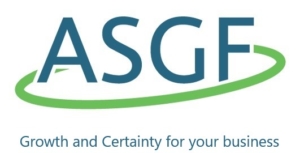The place to come for facts from the UK government on the Coronavirus situation in the UK
as of 26th March 2020
1 Who can claim?
Any UK organisation with employees can apply, including:
- businesses
- charities
- recruitment agencies (including their agency workers paid through PAYE)
- public authorities
You must have created and started a PAYE payroll scheme on or before 28 February 2020 and have a UK bank account.
2 Employees you can claim for
Furloughed employees must have been on your PAYE payroll on 28 February 2020, and can be on any type of contract, including:
- full-time employees
- part-time employees
- employees on agency contracts
- employees on flexible or zero-hour contracts
The scheme also covers employees who were made redundant since 28 February 2020, if they are rehired by their employer.
To be eligible for the subsidy, when on furlough, an employee can not undertake work for or on behalf of the organisation. This includes providing services or generating revenue.
While on furlough, the employee’s wage will be subject to usual income tax and other deductions.
This scheme is only for employees on agency contracts who are not working.
All normal employment law still applies, ie no discrimination, seeking agreement if this is a change to contract,
3 What you’ll need to make a claim
Employers should discuss with their staff and make any changes to the employment contract by agreement. Employers may need to seek legal advice on the process. If sufficient numbers of staff are involved, it may be necessary to engage collective consultation processes to procure agreement to changes to terms of employment.
To claim, you will need:
- your ePAYE reference number
- the number of employees being furloughed
- the claim period (start and end date)
- amount claimed (per the minimum length of furloughing of 3 weeks)
- your bank account number and sort code
- your contact name
- your phone number
You will need to calculate the amount you are claiming. HMRC will retain the right to retrospectively audit all aspects of your claim.
4 Exceptions:
Employees hired after 28 February 2020 cannot be furloughed or claimed for in accordance with this scheme.
5 What you can claim
You can claim a grant from HMRC to cover wages for a furloughed employee, equal to the lower of 80% of an employee’s regular salary or £2,500 per month, plus the associated Employer National Insurance contributions and minimum automatic enrolment employer pension contributions on paying those wages.
6 Do I need to make the pay up from 80% to 100%?
No, you are not obliged to, providing any changes you make comply with employment law, ie are agreed to by the employee.
This from HMRC: You can choose to provide top-up salary in addition to the grant. Employer National Insurance Contributions and automatic enrolment contribution on any additional top-up salary will not be funded through this scheme.
7 Income tax and Employee National Insurance
Wages of furloughed employees will be subject to Income Tax and National Insurance as usual. Employees will also pay automatic enrolment contributions on qualifying earnings, unless they have chosen to opt-out or to cease saving into a workplace pension scheme.
Employers will be liable to pay Employer National Insurance contributions on wages paid, as well as automatic enrolment contributions on qualifying earnings unless an employee has opted out or has ceased saving into a workplace pension scheme.
8 Tax Treatment of the Coronavirus Job Retention Grant
Payments received by a business under the scheme are made to offset these deductible revenue costs. They must therefore be included as income in the business’s calculation of its taxable profits for Income Tax and Corporation Tax purposes, in accordance with normal principles.
Businesses can deduct employment costs as normal when calculating taxable profits for Income Tax and Corporation Tax purposes.
Disclaimer: This is for guidance only. You should seek professional advice before changing your employees’ terms and conditions of employment.
Full details can be found at: https://www.gov.uk/guidance/claim-for-wage-costs-through-the-coronavirus-job-retention-scheme
This comes from a very long government document that has lots of other potentially helpful items in it. I have save you the trouble of wading through pages and pages of “stuff”
The temporary Coronavirus Business Interruption Loan Scheme supports SMEs with access to loans, overdrafts, invoice finance and asset finance of up to £5 million and for up to 6 years.
The government will also make a Business Interruption Payment to cover the first 12 months of interest payments and any lender-levied fees, so smaller businesses will benefit from no upfront costs and lower initial repayments.
The government will provide lenders with a guarantee of 80% on each loan (subject to pre-lender cap on claims) to give lenders further confidence in continuing to provide finance to SMEs. The scheme will be delivered through commercial lenders, backed by the government-owned British Business Bank.
There are 40 accredited lenders able to offer the scheme, including all the major banks.
Eligibility
You are eligible for the scheme if:
- your business is UK based, with turnover of no more than £45 million per year
- your business meets the other British Business Bank eligibility criteria
How to access the scheme
The scheme is now open for applications. All major banks are offering this scheme.
To apply, you should talk to your bank or one of the 40 accredited finance providers (not the British Business Bank) as soon as possible, to discuss your business plan. You can find out the latest on the best ways to contact them via their websites. Please note that branches may currently be shut down to enable social distancing.
The full rules of the scheme and the list of accredited lenders are available on the British Business Bank website.
